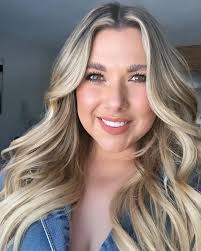Best Hair Extensions for Every Hair Type
Best Hair Extensions for Different Hair Types: Your 2025 Guide to Perfect Extensions
Choosing the right extensions for your hair type isn’t complicated—but it’s where most people go wrong. Your natural hair dictates everything: which method will protect it, how seamless the blend will look, and whether you’ll love (or regret) them once they’re in.
After years behind the chair, I’ve seen the same mistakes on repeat—clients chasing Instagram trends instead of what actually works for their hair, only to end up with damage or extensions that look anything but natural. This guide cuts through the noise and shows you exactly which extensions fit your hair type—no hype, just results.
Quick Takeaways
- For Fine Hair: Go for lightweight methods like tape-ins, hand-tied wefts, or clip-ins. Heavy installs can put too much stress on delicate strands and cause breakage.
- For Thick Hair: You can handle more density—machine wefts, genius wefts, and even layered installs for dramatic transformations.
- Least Damage: Tape-ins and hand-tied wefts are the gentlest on natural hair. K-tips come next, while clip-ins should stay occasional to avoid tension at the scalp.
- Most Natural: 100% Remy human hair, paired with precise color matching and a professional install, is the gold standard for seamless, undetectable extensions.
- Everyday Wear: Tape-ins and hand-tied wefts lay flat and stay comfortable through daily life. Clip-ins bring flexibility for quick changes, while genius and machine wefts deliver long-lasting volume for clients who want consistency.
What Makes the Best Hair Extensions for Your Hair Type?
Your hair type affects literally everything about how extensions perform. The best hair extensions for someone with fine hair will overwhelm thick, coarse hair, and vice versa. Fine or thinning hair needs lightweight options that won't cause more breakage, while thick hair can handle heavier wefts.
Hair density, texture, and overall hair health determine which installation method will work. Extensions that look amazing on thick hair can make thin hair look obviously fake. That's why matching your hair type to the right extension method matters more than brand names or price points.
Quality matters too, obviously. Remy human hair extensions maintain the cuticle direction, so they tangle less and move more naturally. When you're dealing with any type of extensions, especially permanent extensions, you want materials that won't damage your natural hair over time.
How Do Clip-In Extensions Work Best for Different Hair Types?
Clip-in extensions are the most forgiving because you can take them out when they annoy you. For fine hair, clip-ins give you volume and length without the commitment or potential damage of salon installations. They're lightweight and removable, which means your hair gets regular breaks.
The trick with clip-in hair extensions is choosing the right weft size for your hair density. Thin hair needs multiple smaller pieces instead of a few large ones. This prevents those obvious horizontal lines that scream "fake hair" and distributes weight more evenly.
Thick hair can handle larger clip-ins and more dramatic transformations. Your natural volume helps hide the clips and creates better blending. But even with thick hair, placement matters. Sloppy clip-in application looks obvious no matter how good the hair quality is.
Which Hair Extensions Cause the Least Damage to Natural Hair?
Damage prevention should be priority number one. Clip-ins cause the least damage because they're temporary - no heat, chemicals, or permanent attachment methods involved. You can style them, remove them for wash days, and let your natural hair recover.
Tape-in extensions run a close second for damage prevention when installed properly. The adhesive is gentler than fusion methods, and they sit flat against your scalp without pulling. But here's the catch - improper removal can rip out your hair, so you need a competent stylist.
Skip bonded extensions or fusion methods if your hair is already compromised. The heat and glue can cause serious breakage, especially on fine or color-treated hair. Sew-ins can work on thick, healthy hair, but they put constant tension on your scalp that some people can't handle.
What Are the Best Hair Extensions for Fine or Thinning Hair?
Fine or thinning hair is tricky because you need volume without adding weight that causes more breakage. Lightweight clip-ins work best - choose ones with smaller wefts and strategic placement to avoid stressing your existing hair.
Tape-ins can work for fine hair, but only if your stylist knows what they're doing. Proper sectioning and weight distribution are crucial. Too many pieces or placement too close to your hairline will look obvious and potentially cause damage.
Avoid anything heavy. Machine wefts, thick tape-ins, or bonded extensions will overwhelm fine hair and likely cause breakage. Focus on subtle enhancement rather than dramatic transformation - your hair will look better and stay healthier.
How Do You Choose Extensions for Thick Hair?
Thick hair gives you options because it can support heavier methods. Machine wefts and hand-tied options blend beautifully since your natural density provides coverage for attachment points. You can go more dramatic without looking fake.
With thick hair, you can use larger clip-in pieces and more of them for serious transformation. Your natural volume camouflages everything. Just avoid dumping all the clips in one area - proper sectioning prevents that bulky, wiggy look.
Tape-in hair extensions work well on thick hair too, though you'll need more pieces for full coverage. The key is using your natural density to your advantage - it helps everything blend seamlessly with your natural hair.
Can You Style Extensions the Same Way as Natural Hair?
Remy human hair can be styled like your natural hair, with caveats. Quality human hair handles heat, color, and styling products, but extensions don't get natural scalp oils. They need extra moisture and protection to stay healthy-looking.
Synthetic extensions are basically plastic - they'll melt if you use heat. If you love to curl, straighten, or style regularly, synthetic isn't worth the frustration. Invest in human hair or accept that your styling options are limited.
Even with human hair extensions, use lower heat than normal and always use heat protectant. Extensions can't regenerate like your natural hair, so damage is permanent. Treat them gently and they'll last longer.
What's the Best Installation Method for Everyday Wear?
For everyday wear, you want something comfortable that doesn't interfere with normal activities. Tape-ins excel here because they lie flat and don't get in the way of ponytails, workouts, or sleeping. They're also relatively low-maintenance between appointments.
Clip-ins work for everyday wear if you don't mind the routine of putting them in and taking them out. They offer flexibility - wear them when you want volume and length, skip them when you don't. Perfect for people who like variety or have active lifestyles.
Permanent methods require more commitment to maintenance routines. They work if you want consistent results without thinking about it, but they're not great if you're the type who forgets about upkeep until things look terrible.
How Do You Maintain Extensions Without Compromising Hair Health?
Maintenance prevents damage and extends extension life. Use sulfate-free shampoo and focus on your scalp, not the lengths. Extensions don't produce oil, so they need regular conditioning and occasional deep treatments.
Brush gently with a wide-tooth comb, starting from the ends. Never brush wet extensions aggressively - that's how you create tangles and damage. Sleep in a loose braid or use a silk pillowcase to prevent overnight tangling.
Keep up with salon appointments. Tape-ins need moving every 6-8 weeks, permanent methods need even more attention. Skipping maintenance is the fastest way to damage both your extensions and natural hair.
Which Extensions Offer the Most Natural Look and Feel?
Natural-looking extensions blend seamlessly in color, texture, and movement. Remy human hair provides the most realistic results because it maintains natural cuticle structure. This prevents tangling and creates natural shine.
Color matching goes beyond surface color - undertones matter. Professional color matching considers how your hair looks in different lighting and can create custom blends if needed. Don't guess at color matches.
Installation technique affects natural appearance too. Proper sectioning and placement create seamless results. Obvious grid patterns or extensions placed too close to your hairline will always look fake, regardless of hair quality.
What Should You Consider for Special Occasion vs Long-Term Wear?
Special occasion extensions can be more dramatic since they're temporary. Clip-ins are perfect for events - add serious length, volume, or fun colors without commitment. You can experiment with styles that would be impractical daily.
Long-term wear requires prioritizing comfort and maintenance over drama. Choose methods that fit your lifestyle and upkeep tolerance. If you won't invest in regular appointments, permanent extensions will end up looking terrible.
Be realistic about your hair goals. Want permanent length and volume? Invest in quality installation and maintenance. Prefer flexibility? High-quality clip-ins offer better value and versatility than mediocre permanent options.
Ready to find the perfect extensions for your hair type?
At Christian Michael Hair Extensions, we offer premium 100% Remy human hair in every installation method mentioned in this guide. From gentle tape-ins for fine hair to dramatic machine wefts for thick hair, our extensions are designed to enhance your natural beauty without compromising hair health.
Browse our complete collection of tape-ins, K-tips, machine wefts, genius wefts, and clip-ins - all crafted with the quality and expertise your hair deserves.

Tiffany Loe
Owner & Master Stylist
Hair extension expert and salon owner with a passion for helping stylists succeed. Tiffany has been transforming hair and building confidence for over 15 years.




